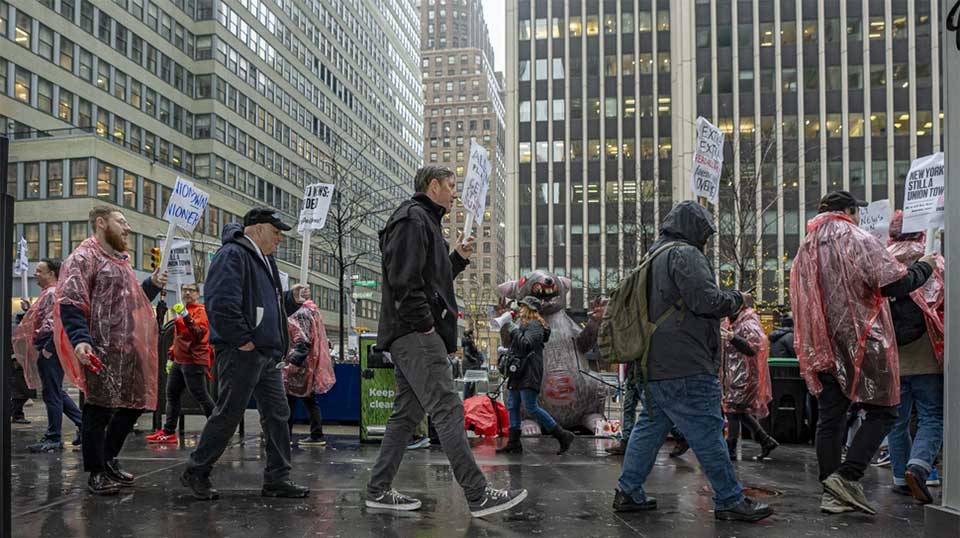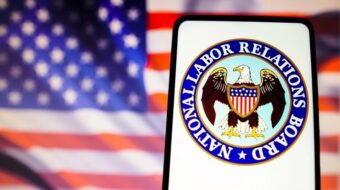
WASHINGTON—A proposed Labor Department rule to force firms to disclose how much time each boss who engages in union-busting spends on that task—and the share of that boss’s pay which covers that time–is hung up at the White House.
At a background pre-Labor Day briefing, a senior Labor Department official could not give a forecast of when Democratic President Joe Biden’s Office of Management and Budget would let the proposal loose for public comment.
But the official, who asked not to be named, said the department is still lobbying for it.
The new rule, in official language, says the department’s “Office of Labor-Management Services intends to explore the scope of split-income reporting on the Form LM-10 Employer Report, pursuant to section 203 of the Labor-Management Reporting and Disclosure Act (LMRDA),” popularly known as the Landrum-Griffin Act.
“Under split-income reporting, the employer would be required to report, for example, its supervisors’ income on a split basis, that is, the pro-rata share of the supervisor’s wages that were spent undertaking the reportable activity.”
The “reportable activity,” in DOL’s official language, is the supervisor being a “persuader” of workers to vote against unionizing. In direct language, union-busting.
If approved, the new rule would give added clout over union-busting to the department’s Office of Labor-Management Services. OLMS, which the GOP-passed Landrum-Griffin Act of 1959 established, is best known for collecting—and publishing—down-to-the-penny reports on all union spending from paychecks to paper clips.
Those reports then become available for researchers to mine, and for union-busters to cherry-pick, screaming about the pay of “union bosses.” By contrast, unless a company is public, and thus must file pay and perk reports with the Securities and Exchange Commission, the data is hidden. And the SEC reports cover only top executives and shareholders.
But OLMS is also supposed to ride herd on union-busters by collecting data on their spending and clients. In practice, hampered by court rulings, pro-corporate bias in past Republican Labor Department regimes, and vague and loophole-ridden disclosure rules—which union-busters often flout, claiming to be just “advising”—incomplete data is available.
Still, what financial data comes from those reports shows union-busters raked in more than $430 million last year, with $14 million of it from Amazon alone.
The Protect the Right to Organize Act, labor’s top legislative priority would—among many other reforms—force more disclosure by the union-busters, including who paid them, how much, and for what. But the PRO Act fell victim to a Senate Republican filibuster threat, aided by renegade Sens. Kyrsten Sinema, Ind-Ariz., and Joe Manchin, Ind-W. Va., who deprived the measure of needed votes in the evenly split Senate.
Faced with that blockade, OLMS decided to draft a rule that forces detailed union-buster disclosure from the buyers—the companies—as well as the sellers, the union-busters, or, in DOL language, “persuaders.” It’s that “buyers” proposal that’s hung up at the White House.
As the proposal sits at the Office of Management and Budget, it drew flak from House Education and the Workforce Committee Chair Rep. Virginia Foxx, R-N.C., a notorious union- and worker-hater who also caters to the corporate class.
Talking about labor issues is part of a supervisor’s regular work, Foxx declared. Disclosing the proportion of the supervisor’s pay and time going to anti-union arguments would, she complained, give unions a tool to use against companies.










